A Lunch With: Sophie Conran
The designer is a dab hand in the kitchen, as we learn on visiting her gorgeous Georgian manor. She shares her tips for tabletop elegance over niçoise salad and a marvellously old-school meringue-topped pud
- Words
- Grace McCloud
- Photography
- Ellen Hancock
- Production
- Harry Cave
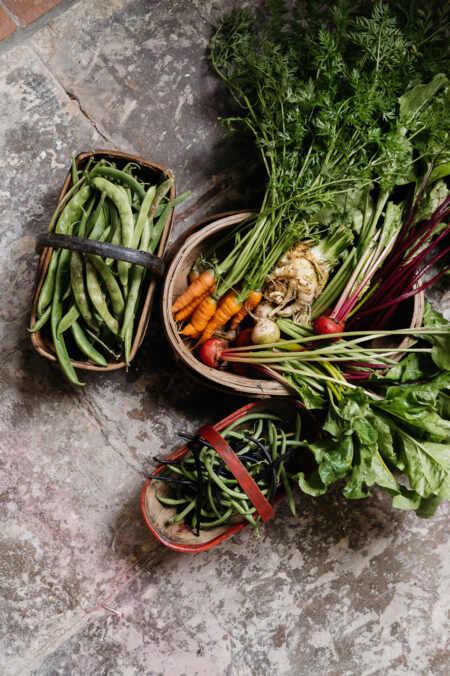
Lunch at Salthrop House is a lively affair. Sophie Conran, our host, is buzzing around, as busy as the bees she’s taken up tending. Her dinner-plate dahlias – though divine and blazing bright – aren’t as big as she would have liked, but what can one do when there’s been no rain? The tomatoes, meanwhile, have shown tenacity in the drought, as have the colossal amount of courgettes.
Sophie’s son, Felix, is on hand to simultaneously chop bits and chew the fat, whipping up a niçoise salad and bantam-egg mayonnaise as he tells of making crumpets from scratch in the family’s off-grid cottage in Wales. “Could you slice those?” he asks, pointing to a bowl of bauble-like beetroot in candyish shades of carmine, pink, pearl and gold, all grown in Sophie’s cornucopian kitchen garden. “Then arrange them like a rainbow. Oooh yes! That would be just so lovely.” Meanwhile Mouse, a distinctly un-mouse-sized lurcher, looks around at the bustle and lollops out of the kitchen, looking for a sofa to snooze on undisturbed.
Felix’s eye for a fine thing well done (until recently he and his father, Alex Willcock, ran Maker & Son, the squishy sofa company) runs in the family. To say that Sophie, daughter of the late Sir Terence, knows a thing or two about good design is an understatement. The unfolding comfort and elegance of her bow-fronted Georgian manor house in Wiltshire is testament to her innate understanding of the art of living well, while the creative empire she has built – crockery for Portmeirion, cutlery for Arthur Price and garden wares for Burgon & Ball, not to mention a slew of cookbooks and her own homeware ranges – is awe-inspiring. “When I’m designing for the kitchen,” she says, “I approach things as a cook. I love cooking.”
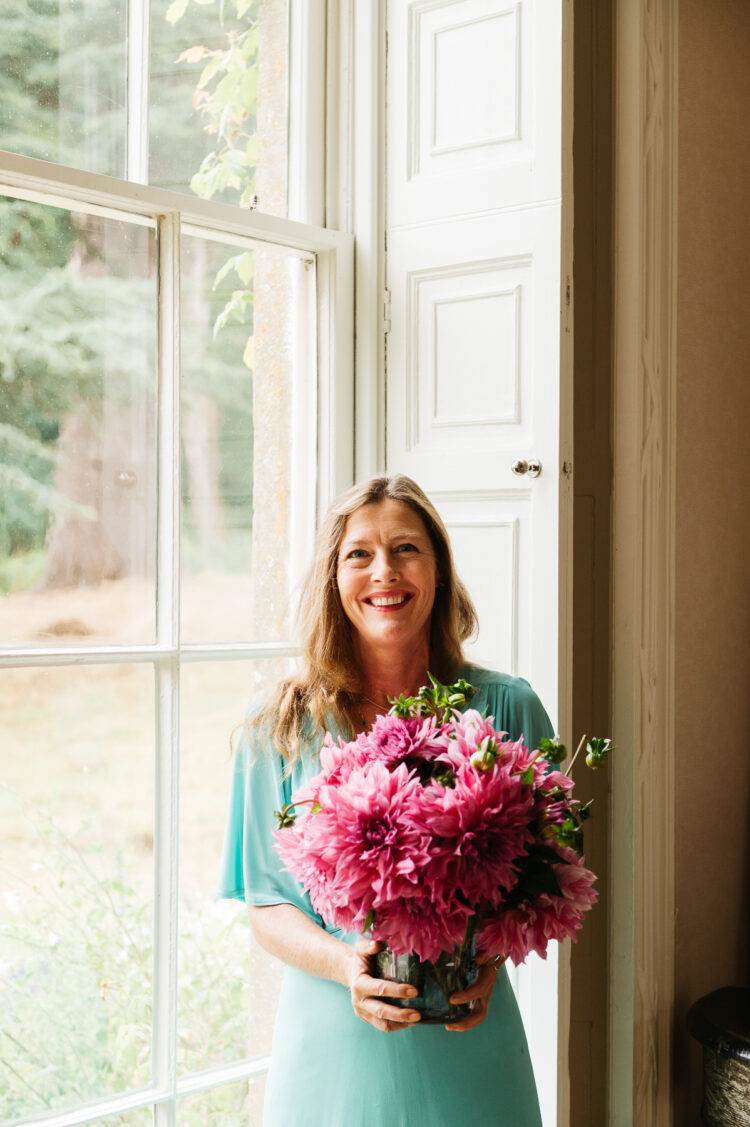
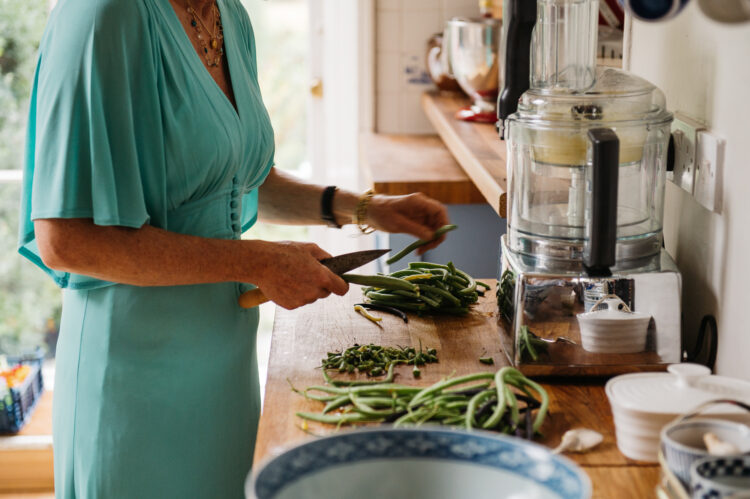
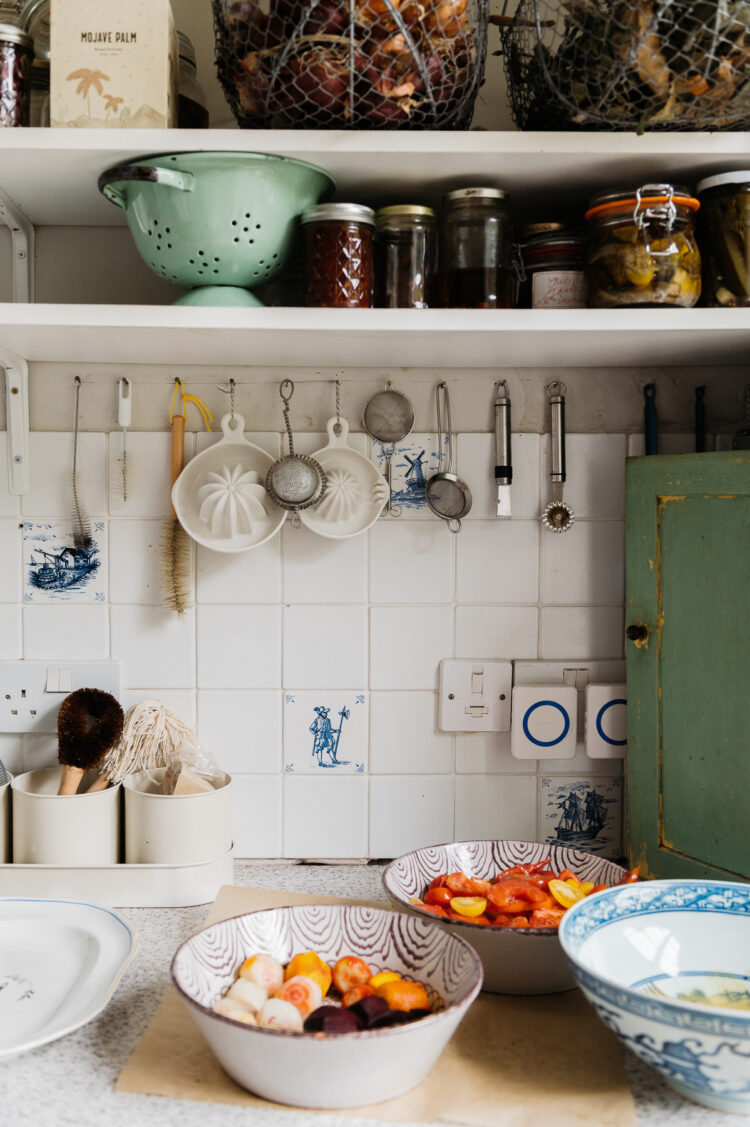


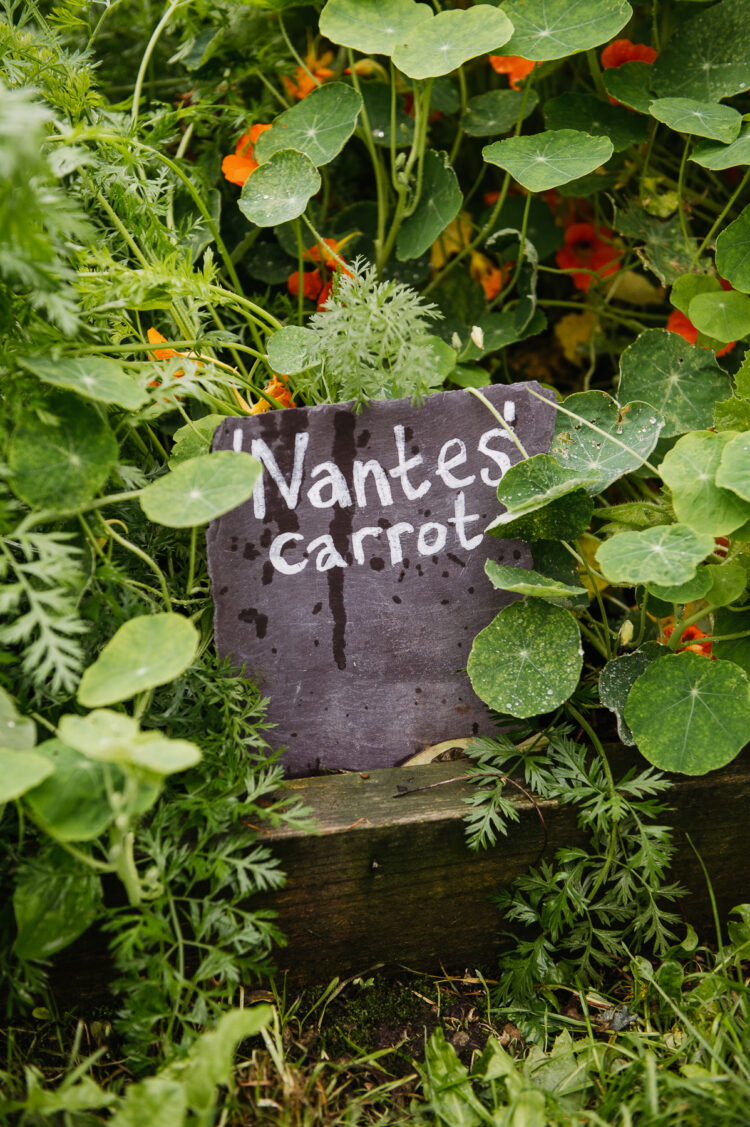
She owes this, she says, to her mother, the food writer Caroline Conran. “I grew up in a family where mucking about in the vegetable garden was what we did,” she says. “And we always cooked together as a family. That continues to be an important thing for us now.” A fine cook, she tells us, is one that enjoys it. “It’s about experimenting and having fun. I suppose the same is true of a good designer.”
Sophie has a measured approach when it comes to utility. “Things need to be practical. Of course they do,” she says, “but sometimes you do just need something lovely too. The frills in life are important.” We put it to her that her own designs, in fact, combine the two: her scallop-edged bed linen, say. “I suppose what I mean is that I like actually using beautiful things,” she clarifies. “Antique plates, for instance. I’ve got masses here. We use them and occasionally, we break them. It’s sad, but not as sad as not using something that was designed to be used.”
Her hands are full at the moment, not only designing for her own brand and others’, but when Inigo visits, Sophie is preparing to open the garden for charity (while praying for more rain) and host a lunch for Greenpeace. The Ukrainian family living with her at the moment are involved – the husband, a music producer, is organising for some opera singers and a quartet to perform – and there’ll be an auction. Soon Sophie, who has always had a thing for independent craftsmanship, will be hosting a fair for artisan makers too.
This house is made for hosting, we suggest. “Very much so,” Sophie replies. “We’ve had such great parties in here,” she says. One of the key things to consider when planning festivities of any size, she adds, is to keep things light – and lay the table with love and attention. “Look around,” she says, gesturing to the grand dining room, its walls hung with chinoiserie panels, hand-painted by de Gournay, and glinting candelabra. “It’s an incredibly formal space and yet it doesn’t feel formal, does it? Do you feel like you’re on best behaviour? I hope not!”
Inspired by her twinkling mischief and tremendous tablescape, we mine her for tips, before asking her to share her mum’s retro recipe for a meringue-crowned queen of puddings. “The classics are classics for a reason,” Sophie says. Wise words indeed.
Colour
“White is so important, of course. I love white napkins and tablecloths, but having only white isn’t so interesting to me. A coloured edge on a piece of linen really adds a little extra something, which I like. The same is true of bed linen, I think. That little point of difference makes all the difference.
“Non-white candles are a brilliant way to brighten things up. A jumble of neons looks fantastic, though I like lilacs and burgundies too.”
Texture
“I have a huge cupboard in the dining room, stuffed with linens. Some are plain, but lots are patterned and printed. My favourite ones are embroidered – they add such depth. They often bring a bit of history too – like the tablecloth I’ve used today. It’s made of samplers from the 1940s, of the kind that would have been created by women up and down the country, which I then stitched together. It’s heaven.”
Flowers
“An obvious one, but an important one. They’re such fun! I love the joy they bring. So lots and lots is lovely. I like grouping by colour – a vase of just pinks, one of just whites, one of solely yellows, another of oranges – and keeping them small. It means you can have lots – so that everybody gets to have a bunch or two near them – and people can see each other over the top. That’s vital!”
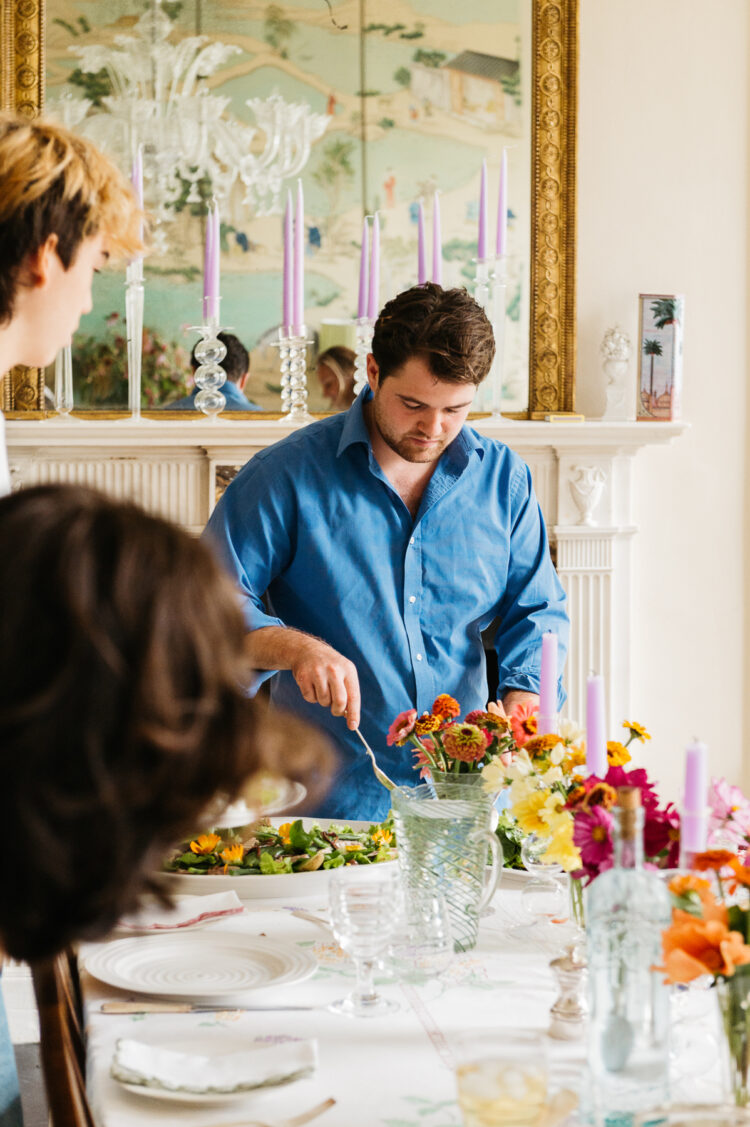
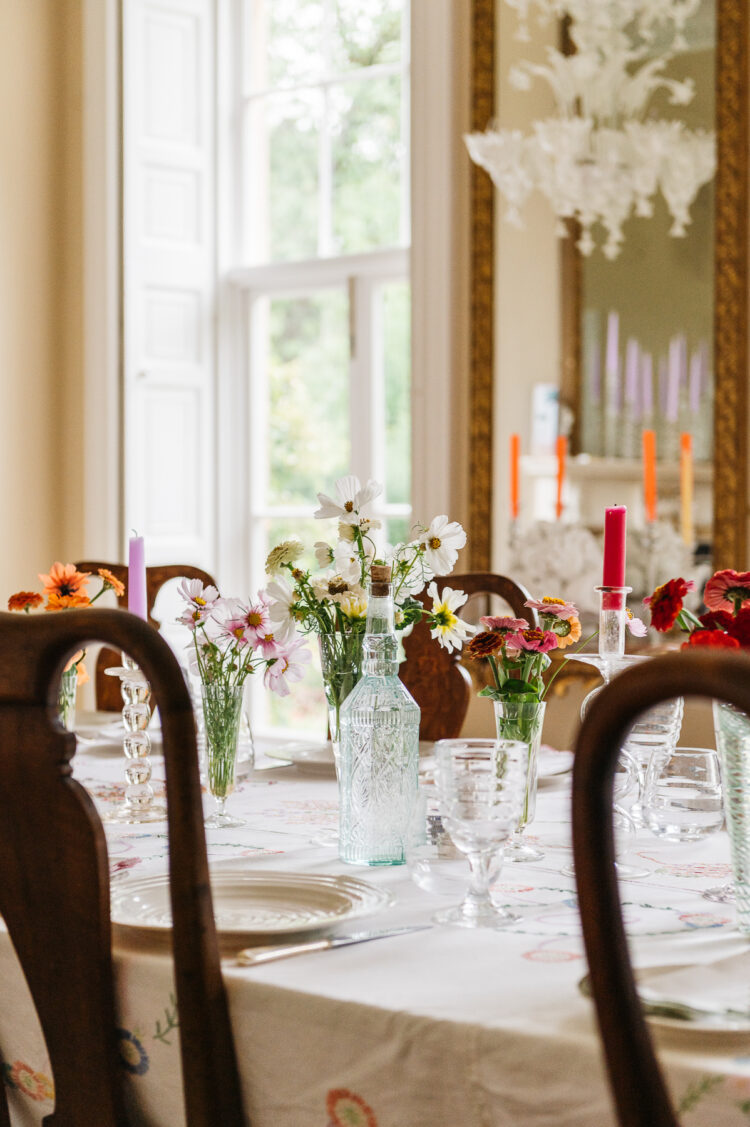
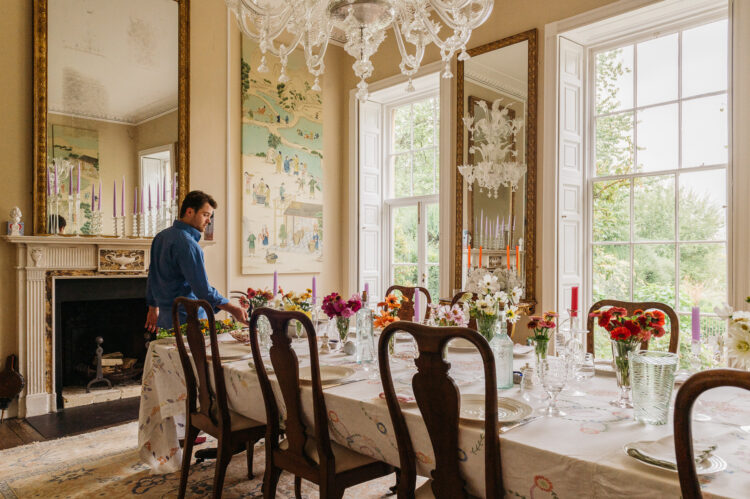
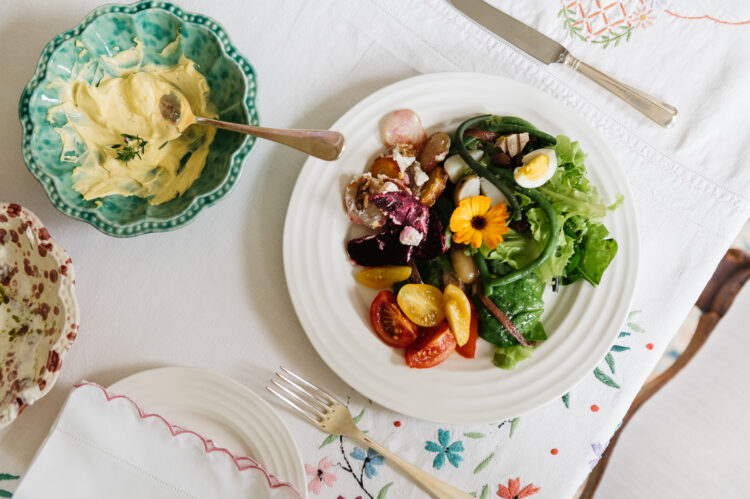
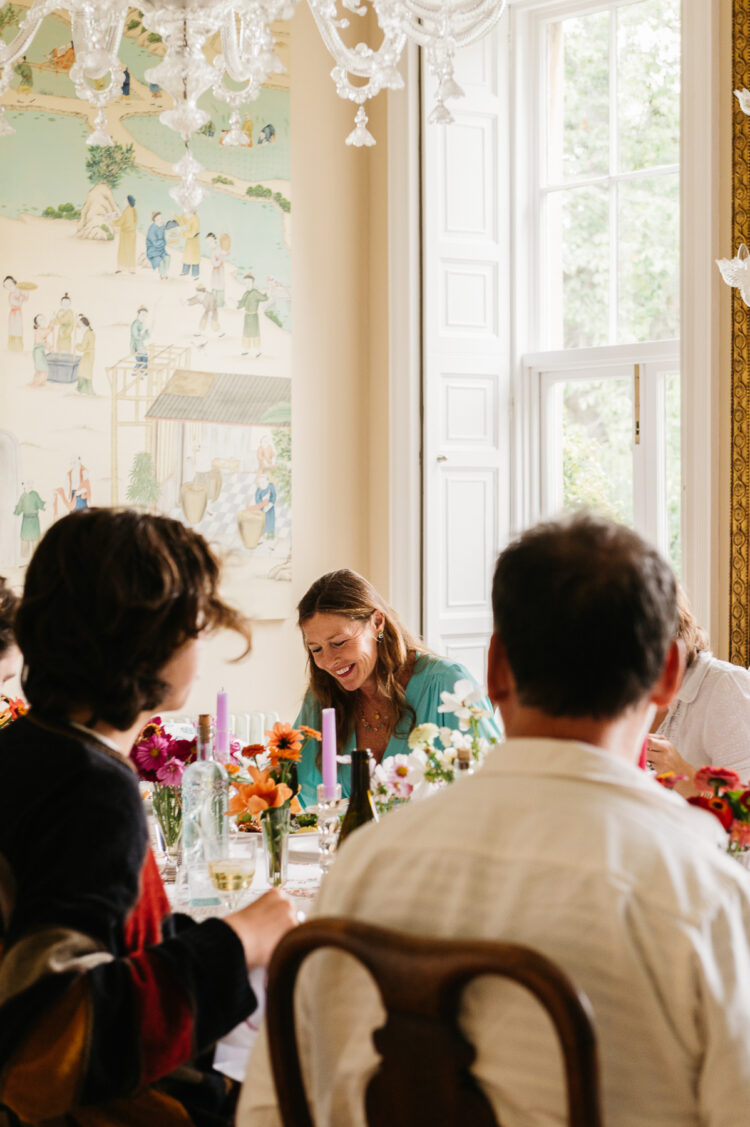
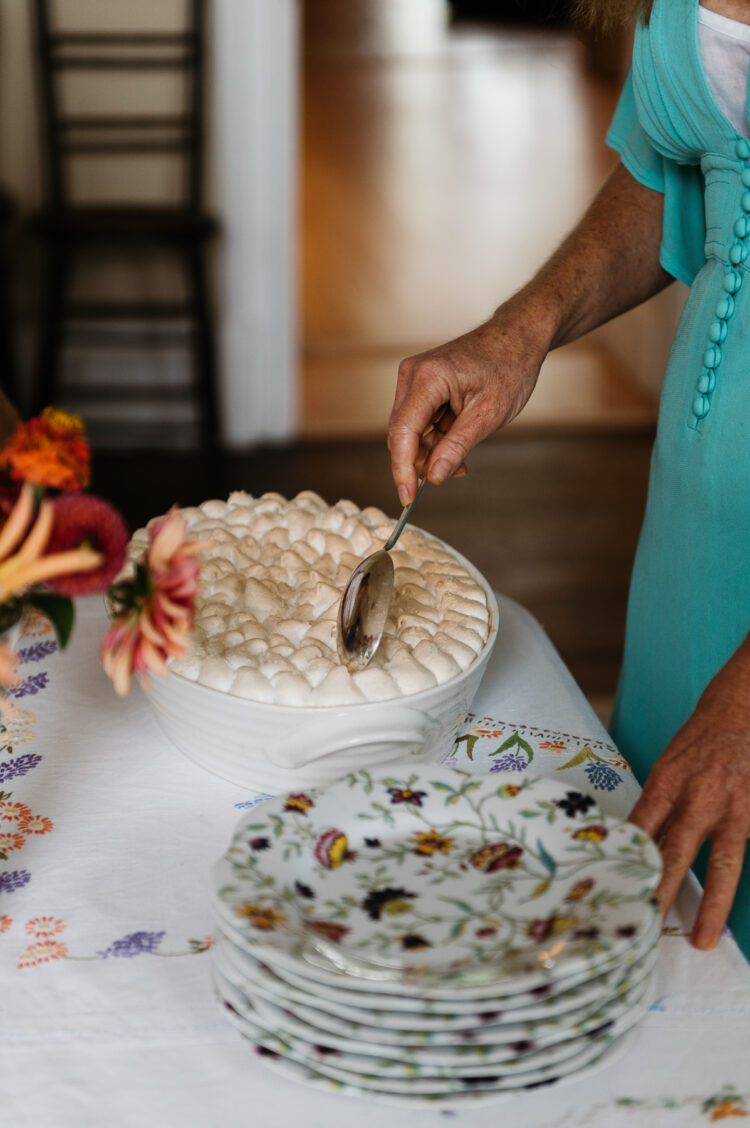
Sophie’s mum’s recipe for queen of puddings (serves 4)
You will need a 1-litre pie dish and a roasting tin large enough to hold it.
Ingredients
300ml milk
30g butter
Grated zest of ½ a lemon
90g fresh breadcrumbs
2 whole eggs, plus white of 1
60g caster sugar, plus 2tbsps extra
125g raspberry or strawberry jam
Method
Preheat the oven to 180° C.
Put the milk, butter and lemon zest into a saucepan and bring to the boil, making sure it doesn’t catch. Pour the hot mixture over the breadcrumbs, before setting them aside and leaving them to cool, soaking into a pulp.
Once it’s cooled, separate two eggs and beat the yolks into the breadcrumb mixture, adding 60g of sugar. Pour the whole thing into a buttered pie dish, before placing it into a roasting tin, filling it with enough hot water to cover up the sides of the dish.
Bake in the centre of the oven for 20 minutes. When it has just set, spoon or pipe the jam over the top. If it’s very stiff jam, heat it with one teaspoon of water to thin it down a bit.
Beat the egg whites to a firm snow. Add one tablespoon of sugar and beat again. Spoon the whites over the jam to cover it. Sprinkle with the remaining sugar and bake for a further 10 minutes, until the meringue is a pretty pale-fawn colour. Serve warm from the oven with cold cream.
Like the taste?
Subscribe
- A Night Away: the Three Horseshoes in Batcombe, SomersetLeisure
- At the Table: an evening of fun and feasting with Olympia and Ariadne IrvingLeisure
- Home Comforts: Zandra Rhodes, the high priestess of punk, on what tickles her pinkLeisure
- Home Comforts: Butter Wakefield on the glory of greenLeisure
- A Lunch With: Bold Bean Co’s Amelia Christie-MillerLeisure

